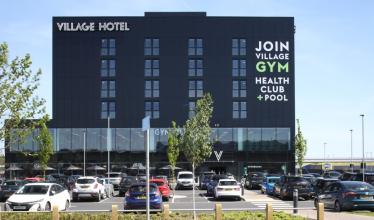While most electric vehicle charging is done at home, a robust and extensive rapid charger network is essential for long-distance EV driving to be a viable option. This Zap-Map analysis looks at the distribution of rapid charging points by location, region, and network to see how the UK’s rapid EV charging infrastructure is shaping-up.

In total, there are more than 1,500 rapid charging devices at over 1,000 locations across the UK. Since many of these devices offer multiple charging standards – typically CCS, CHAdeMO and Type 2 – there are a little over 3,400 connectors available for EV drivers on the UK’s rapid charging network. The network has expanded significantly over the past few years, with a 58% increase in devices since the end of 2016.
As the most populous home nation, England, with more than 1,200 devices, has the lion’s share of these rapid chargers. Next in line is Scotland with around 270, followed by Wales with 40 and 20 in Northern Ireland. However, when looking at the number of rapid chargers available for EV drivers, Scotland is the clear leader with 24 EV drivers for every rapid charger. Then, there is a big gap to Wales with 63 EV drivers per rapid device, with Northern Ireland and England bringing up the rear with 89 and 91 EV drivers per rapid device respectively.

Digging down further by region in England, EV drivers in the South East have the greatest access to rapid charging infrastructure, followed by Greater London and the South West. Between them, these three regions account for 52% of all of England’s rapid devices, and more than 40% of total UK rapid charge points.

In terms of network coverage, Tesla’s Supercharger network leads the way with 307 devices available for its EV drivers to access. However, those units are sited at just 49 locations, reflecting Tesla’s focus on creating charging hubs. Following Tesla, Ecotricity’s Electric Highway network has the greatest number of rapid charge points, with the motorway services specialists operating 296 devices at 182 locations across the UK.
Despite Tesla and Ecotricity operating networks with the greatest number of rapid charge devices, Polar customers have access to significant rapid charging coverage. The Polar network is in third place in terms of total rapid devices but as parent company Chargemaster owns Charge Your Car, Polar customers can charge at 293 rapid devices across 253 locations. These locations are spread out across a greater proportion of the UK than the motorway-focused Supercharger and Electric Highway networks.

Notable for implementing a fast roll-out of rapid charge points is InstaVolt, with the contactless-payment network installing 95 units since Autumn 2017. Other networks that have invested significantly in rapid charging infrastructure since the turn of the year include ChargePlace Scotland with 41 new rapid units and the Polar network with 83 new rapid devices; ESB EV Solutions and Chargemaster Taxi – the networks established for Transport for London to support the new zero-emission capable taxis – have come online in 2018, with 50 new taxi-only rapid chargers in the capital.
The most common place to find a rapid charger is at service station, which makes sense considering the two largest networks – Tesla Supercharger and Electric Highway – both focus on motorways. With more than 500 devices, service station rapid devices make up a third of all rapid charging provision in the UK, and almost twice as many as the next most popular location type – public car parks. The number of rapid chargers in the accommodation category has grown substantially in the past year, with the expansion of Polar’s network to hotels, as have the provision at leisure centres with InstaVolt’s gym focus.
Rapid charging infrastructure is certain to expand dramatically over the course of the rest of the year, as a number of networks have announced plans for further points. Not only will the likes of Polar, Tesla, InstaVolt, Engenie, Shell Recharge, and a number of others add new rapid chargers, high speed 150 kW ultra-rapid chargers are due before the end of the year too, in readiness for the next generation of EVs arriving this year.
New players such as the pan-European IONITY ultra-rapid network will come online in 2018, and the UK Government is currently discussing the Automated and Electric Vehicles Bill, which is likely to see large fuel retailers across the UK make provision for rapid EV charging. GeniePoint is a network operator that is already expanding into existing petrol station sites, and this is a trend that is certain to continue. While expansion in general is welcomed, it is important that rapid chargers go in at the right places, since there are pockets of the UK that are poorly served by rapid charging infrastructure. However, expansion plans backed by government legislation is likely to see the UK’s rapid charging network not only increase, but also cover a greater area than ever before.
Find rapid charge points on Zap-Map desktop and app by using the Speed or Connector filters.



